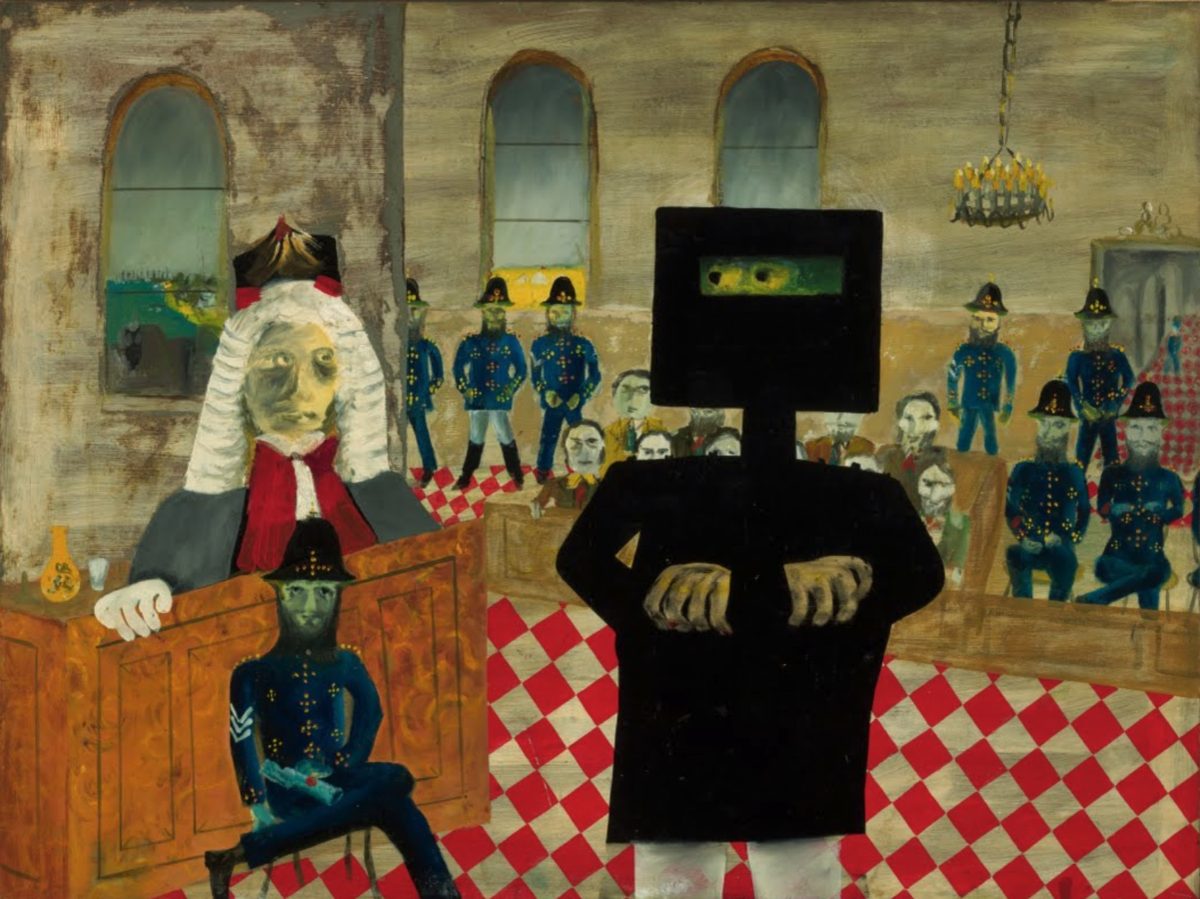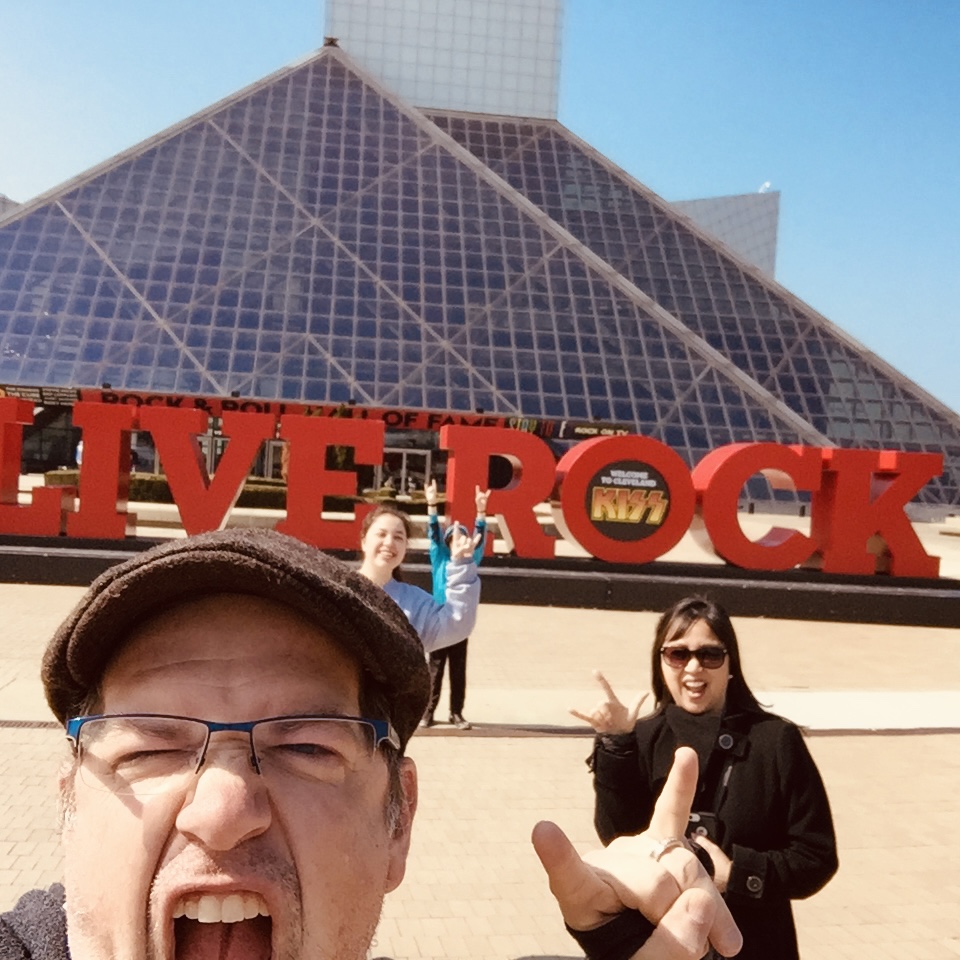Your children give you one of your best relationships in life. Play with them cheerfully and take on the world.
“Dad, can I join a clan?” Simon asked me, aged nine. The heck kind of question is that? And so began a half decade of strange conversations and father-son bonding in the world of social gaming.
Gaming has been a part of my childhood and social network as much as Friday night sleepovers with friends nights playing Dungeons & Dragons and board games. I recall fondly the 80’s HBO opening sequence playing in the background with summer blockbusters on loop. Like most kids my age, we began playing video games in the red glow of Pizza Hut while mom and dad sipped beer in a nearby booth. Then came the 8-bit Atari and Commodore console games, like Pong and Pac-Man and Pitfall wired into the back of 13-channel TVs. I graduated to arcades with a fondness for mechanical pinball. On an early date with my future wife at Dave & Busters, I won tickets to see Ringo Star when I beat a local radio personality in Daytona USA, a network racing simulator. All those days skipping undergrad classes to hang out at Le Fun on The Drag in Austin paid back a token win.
Simon’s desire to play games with his friends really isn’t so different. We created the Texas Empire “clan” with his friends from school in Clash Royale, a popular strategic action mobile game where players develop decks of character cards, like Pokémon, with varying abilities to battle in arenas. The game includes elements of mythical stories like a mission, us versus them, legendary quests and treasures waiting to be discovered. In time, strangers joined our clan, people we’ve never met. Over the years we’ve played hours together with all the delight and frustration one expects in any adventure.
We first played Fornite with Simon’s cousins during Christmas in 2017. That makes Simon and me “OGs,” the original gangsta honorific hailing from early hip hop culture, seen by its own adherents as a type of social game of power, money and leaderboard dominance.
As Fortnite appealed to younger gamers, parents objected to its violence: close range gunfire, sniper headshots, explosions, high falls and death by bludgeoning. I shared these concerns until I came to recognize the game’s hilarious cross-cultural references. Fortnite gameplay feels more like slapstick with cartoonish violence than battlefield realism. Players are animated avatars with bloodless eliminations and perpetual resurrection. It’s interactive Tom and Jerry and Wile E. Coyote.
Parental concern about Fortnite isn’t without merit.
As a first person shooter with sexualized characters akin to comic books and superhero films, I don’t think it’s a coincidence that we see a rise in dangerous police chases and cars plowing through pedestrians along with the popularity of the ultra-realistic Grand Theft Auto where the worst of antisocial behavior is rewarded.
I understand the game’s influence on the adolescent mind. Perhaps gaming keeps me young? My wife can certainly vouch for my regression while gaming.
I’ll not enter the chicken-egg debate on whether gaming imitates life or vice versa. I suspect they feed each other and am inclined to leave empirical data to scientists.
Instead, I want to share the deeper connection I’m enjoying with my son through gaming.
Firstly, I’ve not been dismissive of gaming as a silly waste of time, nor the passions gaming elicits. Fortnite is a cultural phenomenon. It’s the hinge pin of countless experiences Zoomer kids get and their parents do not get.
Every generation presses parental boundaries in dancing, music, fashion and technology. Social gaming is part of that progression.
Fortnite is full of current music, funny TikTok dances, film references and “collabs” with special “merch” growing much faster than Facebook could change its name. The game is a metaverse, a deep mix of popular film, songs, luxury brands and celebrities in traditional and social media. Beyond in-game experiences, Fortnite is reinforced by wildly popular YouTube channels, Twitch streams and subreddits. It’s a commercial powerhouse pursued by Roblox and Minecraft. Earlier this year, Disney opened its vault of intellectual property for gaming partnerships. For parents, social gaming provides the pulse of what interests our kids and their friends.
Secondly, I recognize powerful marketing forces are targeting the perpetually elusive teenage audiences in a way business ethics and psychology have yet to articulate.
We don’t widely understand the benefits and damage of convenience versus privacy in digital culture. My hunch is Simon is viewed as a persona, not a person.
Wherever his individual dignity might be blurred, I will get involved to help him see his place in the big picture. I talk openly with my kids about the effects of media, including gaming, to help them develop an awareness, to guard against their own manipulation.
Did you know you can watch entire films within Fortnite? Some in-game film characters like Deadpool really aren’t appropriate for preteens, so again, parent involvement is key.
We’ve seen the Millennium Falcon land in game with a Star Wars pre-release live interview with director J.J. Abrams. We’ve seen live concerts by popular musical artists like Marshmello and Travis Scott and Ariana Grande, each with their own in-game skins and battle gear. These spectacular virtual events are design and engineering marvels, with millions of kids participating simultaneously. They’re all the kids text and talk about at school for a week. I’m reminded of the arena concerts and music festivals of my youth. Fortnite is hosting generational coming-of-age experiences marked by music and artistry that are vastly more popular than Woodstock, Lallapalooza and Coachella.
Parents: Watch for Unfair Practices and Manipulation in Social Games
Game companies have been employing psychological manipulation for many years.
- Thirteen design patents and terms of use for in-game purchasing systems were examined.
- Video games are increasingly monetized with in-game purchasing options called microtransactions.
- Patented game systems exploit behavioral tracking data to optimize purchasing offers.
- Some player-game dynamics may be viewed as an information asymmetry.
- In-game purchasing systems lack basic consumer guarantees and protections.
Game developers research, test and iterate for maximum financial value. They know how to induce player behaviors and which behaviors are lucrative. In Clash Royale, the win/loss ratio of decks to each other is publicly available. The game publisher Supercell surely has even better metrics. Parents and gamers should be wary.
Likewise, be aware of targeted recruiting ads in games and popular gaming YouTube channels. I’ve seen them from all the US armed forces Army, Navy, Air Force, Marines, Coast Guard and Space Force. Personally, I’m a fan having spent a good deal of my youth in junior and collegiate ROTC programs. I think a military career is something every American ought to discern. Still, parents be aware and ready to have the conversation.
The addictive nature of gaming cannot be mitigated, both in our neurological and psychological attraction to flickering light, audio and pace, and our tendency to avoid responsibilities, duties and struggles in real life. I may have a little more street cred in telling Simon to “turn it off” when I too would rather goof off all day than deal with life head on.
And speaking of work, I’d wager Microsoft and Epic Games host more web-based conference calls than all the direct business apps combined. At least on the weekend before the global pandemic. Gaming should be balanced with outdoor activity, team sports and rough and tumble play that teach kids to explore our physical world and their own potential.
The Benefits of Gaming
From what I can tell, gaming appeals to higher order senses:
- A sense of mission and purpose, which appeal to deeper motivations of meaning;
- A sense of right and wrong, of rules, of fair play, justice and mercy;
- A sense of the new and novel, an appeal to openness and a call to exploration;
- A sense of adventure and challenge;
- A sense of potential, of failing and trying again, of pushing one’s self to achieve a goal, and the satisfaction of success;
- A sense of accomplishment and completion;
- A sense of place, one’s orientation in a world and among others;
- A sense of intent, with urgency. Social games often involve rapid communication among teammates who organize in a joint pursuit toward a cause they cannot achieve alone.
Gaming also appeals to base senses like us versus them, played out as good guys versus bad guys. In-group and out-group studies have connections with disgust, a deeply ingrained survival mechanism.
As boys are generally more attracted to gaming than girls, I wonder if boys fared better socially during the pandemic than girls. YouTube and Twitch streaming, which also skew more toward male audiences, are filled with gaming channels pushing social interactions and improving gameplay. Girls, on the other hand, have a more isolated social experience on platforms like TikTok and Instagram that are less interactive, with more visual comparisons in fashion and beauty, and highly opinionated comment features.
Our Bond Beyond Gaming
I’ve led a seasonal prayer breakfast for men for 13 years. Every Friday morning at 6:00 am, we meet for coffee, tacos, fellowship and structured conversation. We watch a brief video or a talk given to the group, and discuss in small groups and conclude with a brief reflection by clergy. These meetings are well attended, usually between 60 and 70 guys representing dozens of ministries in our parish and neighboring parishes. The idea is to develop meaningful connections with friends, to help each other grow closer to God, to become better husbands, fathers and leaders in our community.
The program is specifically designed to accommodate dads of our parish school. Meetings are bound to the school year, and they wrap before the school Mass. And yet, I can count on one hand the number of men who’ve invited their teenage sons to join.
Just before his 14th birthday, I suggested to Simon he might enjoy going with me. To my delight, I’ve not once had to wake him up or force him to attend, nor has he ever whined about having to wake up so early. When I come downstairs at 4:45 in the morning, he is dressed and ready to go. We arrive around 5 am to make coffee, set up tables and goof off with the rest of the set-up team.
Incredibly, Simon recruited a half-dozen of his classmates to join our breakout table. I already knew each of these boys from our Clash Royale clan, but it’s in these meetings that I’ve really gotten to know them. I know their parents, their siblings and classroom drama. I know when essays and science projects and homework are due. I know each boy’s individual quirks and idiosyncrasies and insecurities, who is funny and outgoing, and who is shy and reserved. I see how they tease each other, as men do, as a means of testing one another, asserting the primitive hierarchies in which we size each other up and orient ourselves. I watch the proverbial iron sharpening iron. Paradoxically, their verbal sparring is a deep sign of respect, as if to say, “I know you. I know what you can handle, and it’s more than you know.”
I sit at their table to foster fellowship on their terms. I guard against an overly churchy experience; it’s enough that they are even at church outside of Mass, among the good men of our parish. It is here the boys encounter the individual priests, deacons, doctors, cops, tradesman, teachers, attorneys, salesman, entrepreneurs, fathers and grandfathers. They personally know heroes of war, a pioneer in laser technologies, a jeweler, mechanics, a UT Tower shooting first responder and leaders in political parties and popular companies. And all these men know Simon and his friends. For the boys, it’s masculine initiation with civility in true friendship and shared interests beyond gaming.
At this age, inevitably, common interest in games is the beginning of exploring other interests. Fortunately, I’m in a position to discuss gaming nuance because I too enjoy games. I know the frustration of losing to a broken game mechanic, or lost wifi connection or sudden interruption. I can speak to real disappointment, and consequently, I’ve earned a degree of trust and openness talk about the game of life.
At our table, created a new game I call, “Ask me anything.” I invite Simon and his friends to stump me with the hardest questions they can muster. I’ve fielded incredibly intelligent questions. It’s mentally taxing because there isn’t any room for lying. Kids can smell bullshit before they step in it. When I don’t know an answer, I give them the satisfaction of beating me. Then we investigate the question together on our phones. We rely on search, images of great cathedrals, the lives of saints, the wisdom of church fathers and zooming into maps of Israel.
As Roman Catholics, we also have two books on our table that guide us in the game.
The first is sacred scripture, the Bible, or more accurately, a canon of 73 books with collective human wisdom extending back 4000 years to the early Hebrew texts. The second book is the Catechism, a synthesis of what the magisterium holds to be true on hundreds of matters. The genius of the Catechism is in how it’s structured to make deep insights approachable.
One of the benefits of a classic Catholic education is the Catechism. It’s an iterative collection of human knowledge, much like the continuous delivery models in modern gaming and progressive web applications. The Catechism includes academic thinking in an approachable essay writing style with an index to help us find answers to difficult questions. It teaches logic with scholastic terms from old books. It builds vocabulary with proper words, and sentences, and paragraphs arranged to form big ideas. Like modern games, the Catechism is a cultural intersectionality.

Combined with the Bible as the Catechism is intended, both books have strong potency appealing to people across time and culture and geography. The books are hyperlinked texts, like the web, with tens of thousands of cross references in ancient myths, parables, mystical wisdom, poetry and stories that transcend time. Understanding religion as part of humanity’s metaphorical substrate taps into the same awe and wonder a child feels in an immersive game.
My Advice to Parents of Gamers…
Recognize the value of play as part of natural human development. From our infancy, we gain knowledge through mimicry. We learn objects exist and events occur independently of our actions. As embodies souls, we attribute meaning to the physical world. The great psychologist Jean Piaget contributed volumes of work to the field of child development on the principles of learning through play.
Understand games engage the mind through story. They involve plot, characters, setting and ancient modes of conflict with a clear beginning, middle and end. We participate in dramatic nuances of negotiation, token economies, ownership and cunning strategy. Games are an immersive form of storytelling, the way humankind has always gained wisdom and experience.
Don’t yell at your kids to stop playing, or to go to bed, get off the X-box, turn off the TV, etc. First of all, they’re on a conference call. Everyone in the game can hear you screaming. I cannot tell you how many times I’ve heard a parent yell at their kids, “Turn it off, NOW!” I cannot help wondering, even if they’re unaware that others are listening, are they not mindful of the separation they’re sowing among their own progeny?
Worse, harshly insisting on an unexpected end to gameplay puts a kid in a terrible spot. Do not force your child to choose between obeying you and being disloyal to their friends.
Keep in mind, when a kid is in a game, they’ve made a tacit commitment to his teammates to help them fulfill a quest. If they have to leave early, your child can easily cause the entire team to fail at the mission. Do that two or three or four times, and their friends will not want them to join the team. Quitting early leads to feelings of wasted time better spent without your child’s participation. Being excluded from play is not good for a child’s healthy development. We want our kids to have positive connections with their friends, to feel welcome and wanted.
Even in solo games, sudden quitting will lose accomplishments if the game doesn’t autosave progress. Imagine the frustration of your computer crashing before you could save a document or spreadsheet. The lost time and energy is maddening. When a kid whines, throws a tantrum and withdrawals because you made them stop suddenly without warning, are they really any different than us?
Feelings of disappointment and frustration are real and avoidable. A good parent doesn’t demand blind obedience when doing so leads to the anxiety of unfinished business or betrayal. Set boundaries in a respectful manner.
Figure out how long a typical game lasts and set time boundaries. Be sure to account time to boot up machines, get logged in, connect with friends and start a game. If there isn’t enough time, say “Not right now,” and suggest a better time. And when that time comes, let them play freely.
A Fortnite solo mission might take twenty minutes. A squad mission takes about the same time. A Clash Royale battle is three to five minutes. Some games haver countdown timers. Puzzle and strategy games like Sudoku can be stopped and started with little notice.
Recognize they may have underestimated the time it takes to complete a quest. Just as we all overestimate our ability to handle more than we can, give them a little padding, especially if they’re just learning a new game.
Help them develop internal discipline of timing, when they play and for how long. If they struggle with this – and most will – then be a good parent with external discipline. Say no. Don’t take their disappointment personally. Don’t give in to bad attitudes and bad behavior like whining, yelling, tantrums or slamming things. Set firm boundaries and enforce them.
Help them visualize responsibility and what it’ll be like when they transition away from the game. For example…
“You can play your game for one hour. After that, we have to [leave the house, eat dinner, go to bed, etc].”
Or ask, “Can you get to a stopping point?”
Take an active role. Don’t be passive. Games are not babysitters or mindless distractions. On the contrary, games engage deep neurological circuitry to activate physical and emotional centers of the brain. As such, they should be limited and appropriate for your child’s age, temperament and maturity.
Be mindful with whom they’re gaming. I’d caution against allowing lone gamers to join their group without your supervision. Games ought to reinforce friendships they know personally like cousins, classmates and neighborhood kids. I’ve noticed the further removed a player is from personally knowing the people with whom they play, the more apt they are to antisocial behavior like cursing, stealing loot and sabotage.
I’ve not seen the contrary hold true. In my experience, online gamers that meet in person often don’t always an interpersonal connection. There is an obvious mission when playing together, but that doesn’t always translate outside the game. I’ve seen gamers with different personalities and values find they don’t really have anything in common at all except the game itself.
Play with them! Games are fun! Humans have an incredibly long maturation period before they leave their parental nest. And yet, every older parent says, “Time flies. Before I knew it, they were gone.”
Make memories. Spend time in playful activity you both enjoy.
Feature image is The trial-Ned Kelly Series (1947) by Sid Nolan in Canberra’s National Gallery of Australia. Nolan captures the trial of Australia’s notorious bushranger outlaw noted for his bulletproof armor in his final shootout with police. Like Fortnite, the artist employs bold bold colors, sunlight and landscapes to quickly render the unfolding drama.



